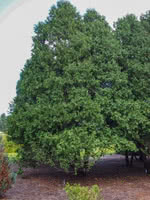Mon-Fri 9am - 5pm Mountain time
Black Hills Spruce vs Eastern White Cedar (Arborvitae)
Thuja occidentalis
Picea glauca var. densata
NOT AVAILABLE THIS SEASON - MIGHT RETURN
Eastern White Cedar is a slender growing conifer often used as a decorative tree or a hedge. This tree is an effective privacy screen even in winter and a great long term solution to urban crowding or a drab yard.
Black Hills Spruce is a subspecies of White Spruce native to the Black Hills of South Dakota. It has a strongly conical form, slower growth rate and denser foliage than typical white spruce, making it preferable as a specimen tree for smaller suburban lawns. It also responds well to pruning, and can be used as a hedge or even bonsai.
Eastern White Cedar (Arborvitae) Quick Facts
Black Hills Spruce Quick Facts
In row spacing: 3 - 4 m (10 - 12 ft)

